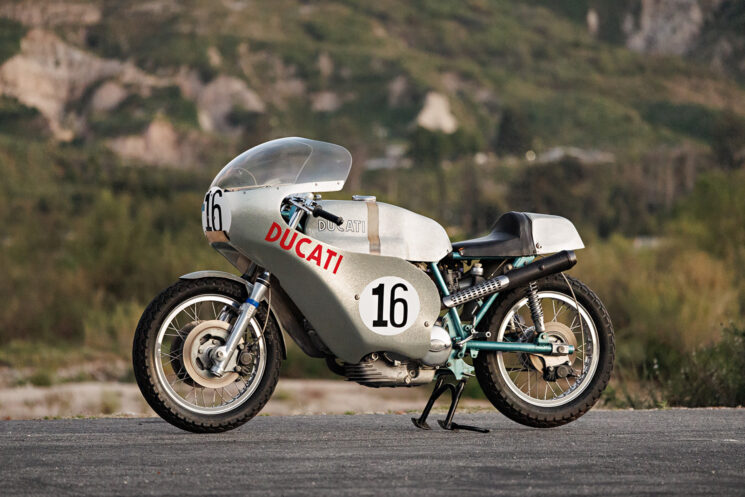
A brilliant assortment of 38 classic motorcycles and a boatload of memorabilia is set to cross the block at Gooding & Company’s Geared Online sale, with most lots selling at no reserve. You’ll find everything from Honda Z50s and Cushmans, to top-tier Ducatis and BMWs in the online-only auction, which starts on Wednesday, May 8, and concludes on Friday, May 17.
While picking favorites is never easy, the following five bikes are undoubtedly the headliners of the Geared Online sale.
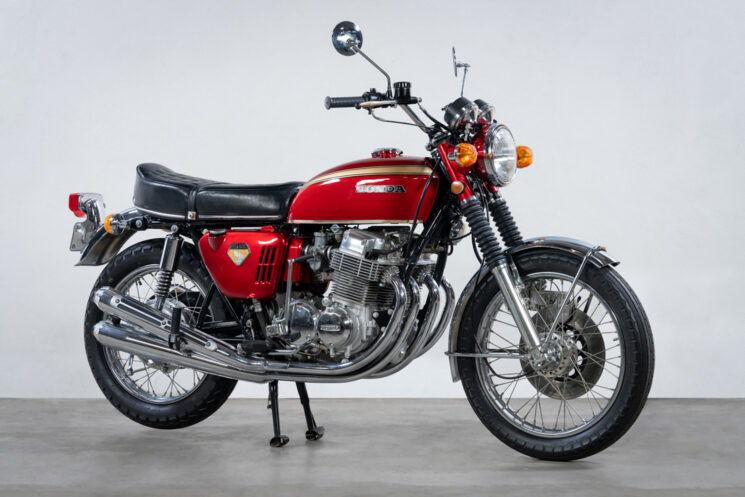
1969 Honda CB750
Honda built a crap-ton of Honda CB750s, roughly 445,000 examples of the SOHC 750 and another 110,000 DOHCs afterward, and decent examples can be found on your local classifieds for as little as $2,000. So what does it take to make a CB750 worth roughly 20 times that amount?
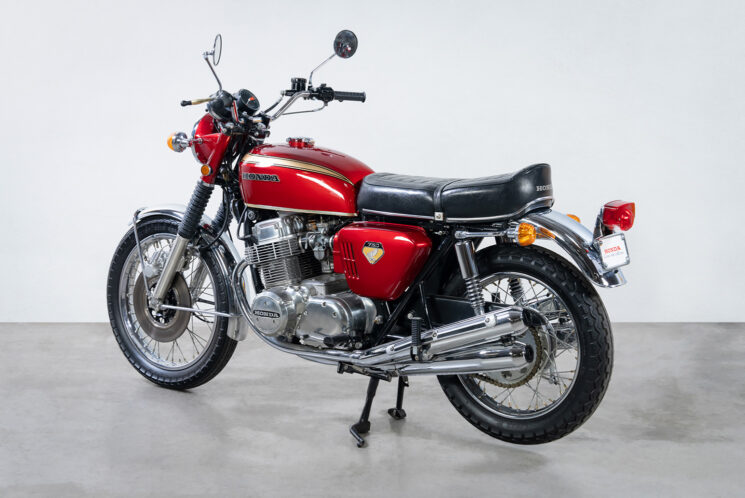
Having built their reputation on smaller displacement machines, the CB750 was Honda’s gutsiest move ever when they debuted the model in 1969, and they weren’t sure how it would go over. Honda minimized its investment in production costs by using permanent mold casting, instead of more costly die-casting. While sources disagree on whether the initial run of 7,714 CB750 engines was actually cast using sand, the name stuck, and the value of these early bikes has skyrocketed.

As we all know, the CB750 would go on to be a massive success for Honda, cutting deep into the Brit’s and Italian’s ownership of the big-displacement scene, and establishing the formula for affordable superbikes of the next generation. For its historical significance, even a die-cast 1969 CB750 can bring north of $25,000 in concours condition, but the market places a huge premium on known sand-cast VINs.
Gooding’s Lot 30 from the Geared Online sale is a beautifully restored ’69 CB750 with the desirable early VIN of 1001484. While it’s been stored dry for the past decade and will require some recommissioning before use, Gooding estimates 1484 will perform strong, and the pre-auction estimate comes in at $30,000 to $40,000.
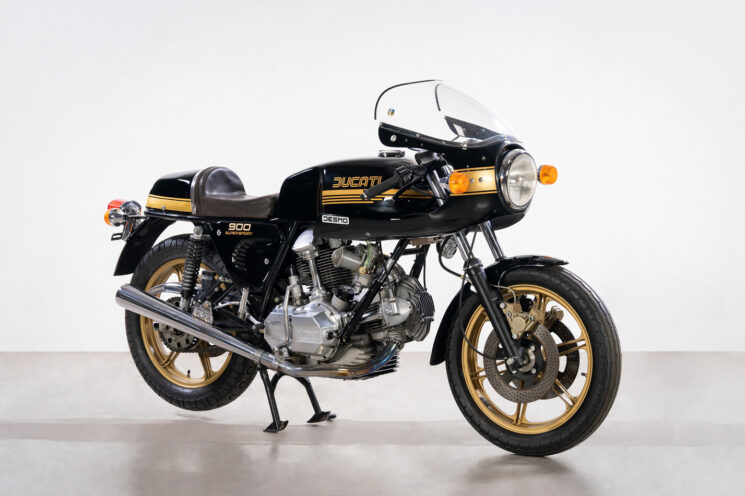
1981 Ducati 900 Super Sport
Japan had redefined the sportbike back in the 1970s, and while they couldn’t match the handling prowess of the Europeans, maintenance and MSRP alone were enough to sway most buyers. That made for tough times for brands like Ducati, until one fortunate day at the Imola 200 in 1972.

There, Paul Smart and Bruno Spaggiari brought home the famous 1-2 finish that restored enthusiasm for Ducati, and inspired one of the most iconic motorcycles of the 1970s—the 750 SS. Basically a legalized version of the race bike, the SS was powered by a 748 cc desmodromic L-twin that produced 70 hp at 9,000 rpm, all while keeping the dry weight under 400 pounds. It looked the part as well, fit with disc brakes and Marzocchi suspension, and the original 401 examples established Ducati’s formula for big-displacement road bikes for the next decade.
Ducati was looking to spice things up by 1975, and found that the 750 SS L-twin’s displacement could be safely brought out to 864 cc, and the rest of the 750 platform could support it. Thus the 900 Super Sport was born, and Ducati would fine-tune the bike in the coming years. And, of course, we can’t forget about Mike Hailwood’s sensational victory at the ’78 Isle of Man TT aboard a 900 SS.
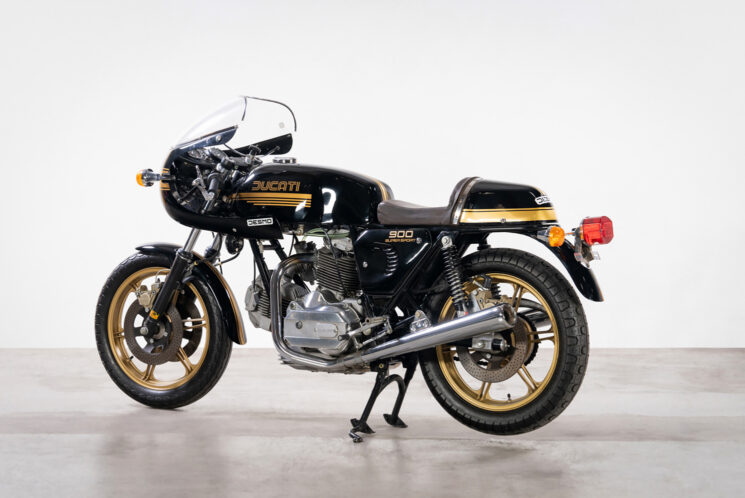
The 900 SS would become the S2 model in 1982, and it’s said that the last 900 SS was the best. Gooding’s Lot 50 has to be one of the most desirable 900 Super Sports in existence, it being a 1981 model in spectacularly original condition. Showing 8,132 Km [5,000 miles] on the clock, the bike is believed to be factory-original down to the windscreen and fasteners, tires and spark plug boots.
Documented by leading Ducati historians, Gooding believes the 1981 900 SS will bring $40,000 to $80,000.
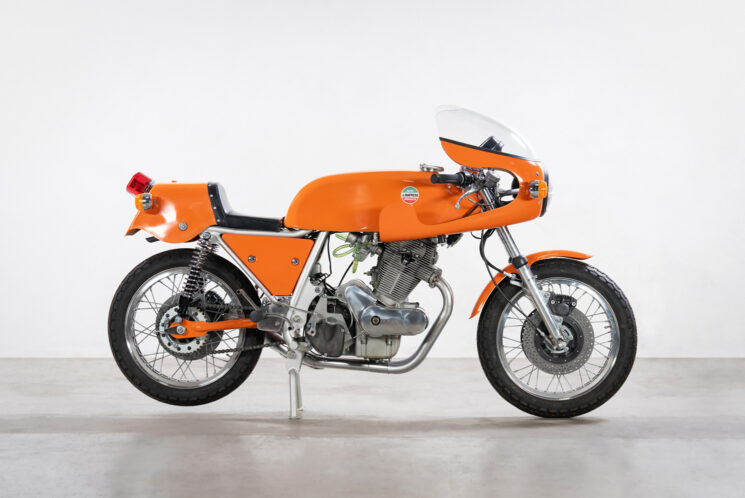
1974 Laverda 750SFC
There are few more impactful ‘what could have been’ stories in motorcycling than Laverda. Born from humble beginnings in agriculture, Moto Laverda was launched in the post-war years to provide simple and reliable transportation on two wheels. But it wasn’t long before Laverda’s engineering prowess and build quality gained reputation, and the humble Laverda 75 and 100 models soon became riders’ favorites in endurance racing.
Into the 1960s, Laverda started building small-displacement twins, and eventually schemed a 650 cc parallel-twin that would push the company’s exports to the next level. The finished production bike grew to meet the 750 cc benchmark in the form of a massive air-cooled, parallel-twin with an overhead cam and a unit five-speed transmission—with the engine serving as a stressed member in the chassis.
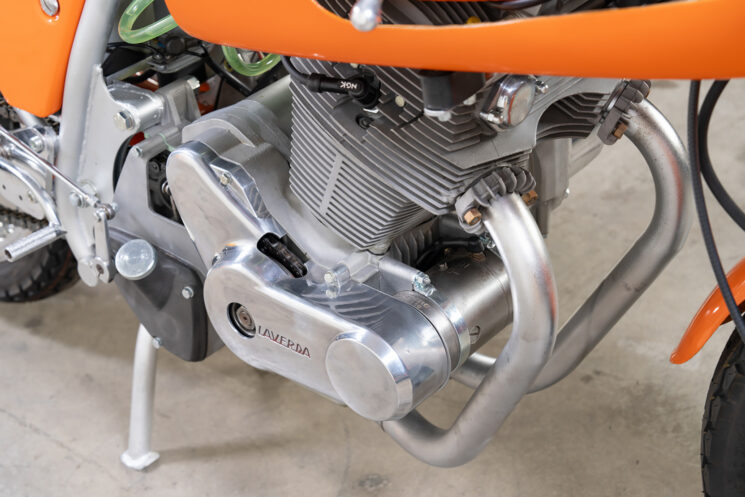
The Laverda 750S had catapulted the company to new heights, and they continued to refine the bike throughout the early ’70s–resulting in the 750SFC (Super Freni Competizione). Undoubtedly the pinnacle of Laverda’s cycle works, the 750SFC was built in 4 batches from 1971 to 1976. Each batch incorporated increasing levels of performance over the 750SF, including higher compression ratios, improved camshafts, refined induction, modified chassis and suspension systems and (of course) racing bodywork.
Laverda’s 750SFC proved dominant in endurance racing right out of the gate in 1971 with 6 wins, and superior reliability was often its ace in the hole. A total of 549 SFCs were built for factory riders and the general public.
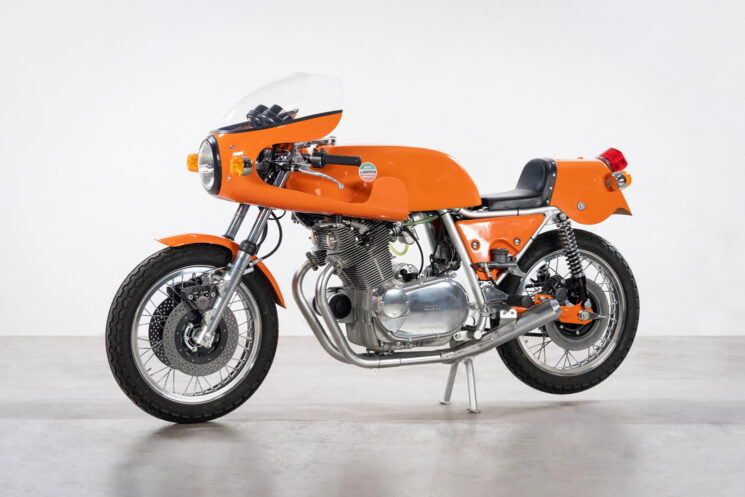
Gooding’s Lot 45 is a concours-quality 1974 750SFC with its numbers-matching engine. Stamped with chassis No. 17100, this was the 100th (and final) bike of third batch production that was built to U.S. export spec. Gooding & Co. estimates the bike will bring $40,000 to $60,000.

1975 MV Agusta 750S America
MV Agusta had established a fine reputation for building some of the best track-bred sportbikes available through the 1960s, but the 1970s weren’t looking so good. With ravaged finances, MV went under state administration in 1974, and the company needed a bright idea to restore excitement for the brand. One possible solution came from across the pond.
Chris Garville and Jim Cotherman of Commerce Overseas Corporation, MV’s sole US importer, approached the company in 1975 with the idea to build a special-edition machine for the U.S. market. It needed to be closely based on MV’s race machines, with all the power, glitz and glam the Italians could muster, along with bringing MV’s 750 back into U.S. conformity.
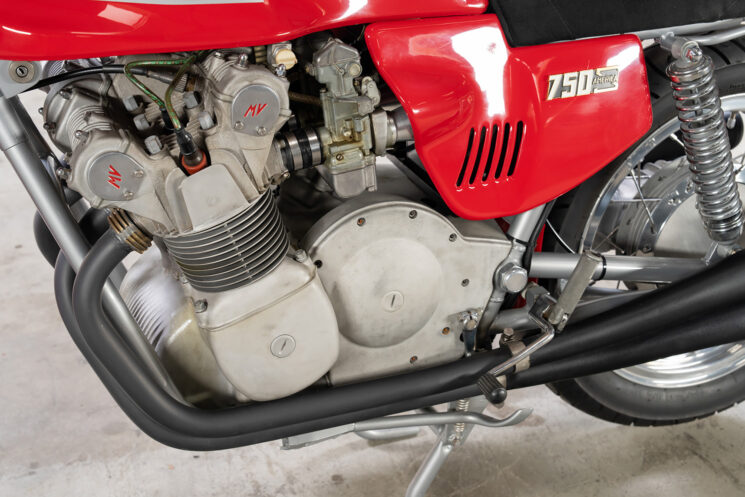
Dubbed the 750S America, the core of its components were taken straight from the 750S. The exotic DOHC four-cylinder was a known quantity, but MV increased the bore by 2 mm to build a more powerful 789 cc mill. Four 26 mm Dell’Orto carburetors fed the engine, and the snazzy four-pipe exhaust system closely resembles the 750S. The unit-construction five-speed gave the 750 America a top speed of 130 mph, and the larger 38 mm Ceriani fork was equipped with dual Scarab discs.
MV built just 556 examples of the 750S America, making any survivor noteworthy, but Gooding’s Lot 48 is an especially significant machine. Not only is this one of just 200 built for the model’s introductory year, but it happens to be the ninth bike of the production run. With the first eight bikes going to MV Agusta family members, board members, and Giacomo Agostini, this particular bike was the first to leave MV’s inner circle, and landed in the hands of Chris Garville of Commerce Overseas Corporation.
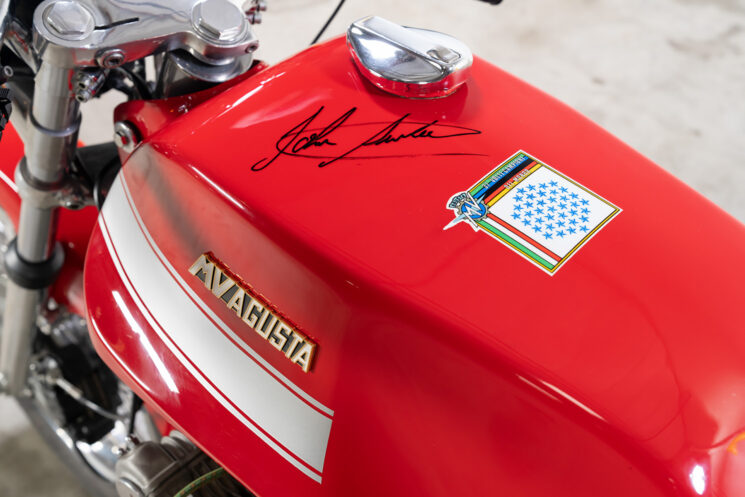
Garville would keep the bike until 1984, when ownership was transferred to his brother Peter. No. 221009 found a new owner in 1990, and a comprehensive restoration was carried out by MV Specialist Perry Bushong in 2014. Aside from its Kay Engineering exhaust system, the MV was brought back to 100% original specification, and Gooding & Co. estimates the bike will sell for $60,000 to $80,000. Considering this exact machine brought $73,700 on BringaTrailer.com last year, we’d say they’re in the ballpark.
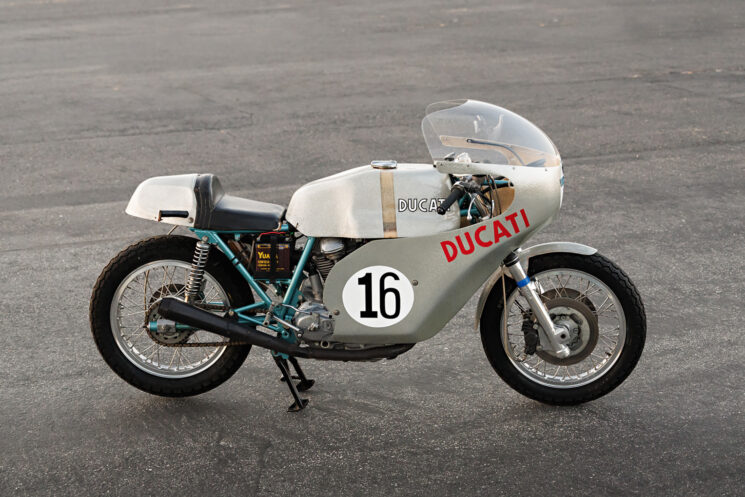
1972 Ducati 750 Imola Desmo
April 23, 1972, marks the most significant day in Ducati history, and there’s virtually no discussion of L-twin Ducatis of the 1970s without it. This date marks the historic day when Paul Smart and Bruno Spaggiari accomplished a commanding 1-2 finish at the inaugural Imola 200, besting the favored MV Agusta of Giacomo Agostini, and establishing Ducati as a premier brand.
Development of Ducati’s L-twin engine started as early as March of 1970 under the leadership of Fabio Taglioni, and the tenacious Italians had a running prototype just five months later. The bike was initially conceived in a 500 cc displacement, sporting desmodromic two-valve heads, 10.5:1 compression and an output of 61 hp at 11,000 rpm. Aiming to drum up excitement at Italian championship and Grand Prix events, Ducati was all-in on the V-twin, and Taglioni was urged to develop a full-fledged 750 cc version.
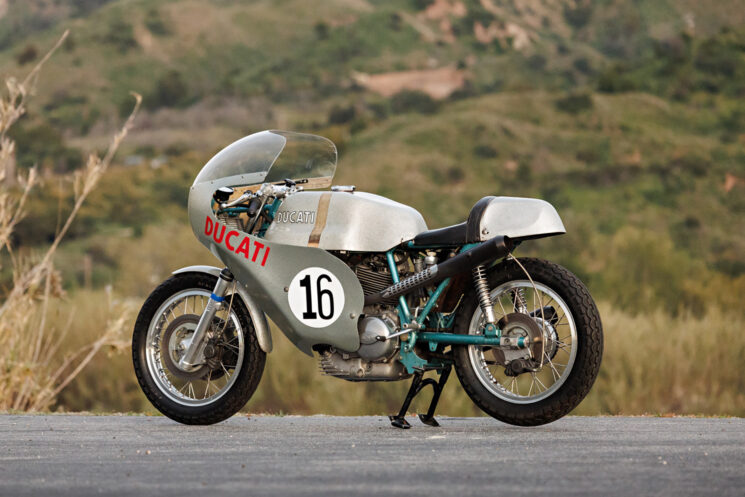
The 500 cc and 750 cc bikes were nearly identical in the technical aspects, both based on a Taglioni-designed frame with input from chassis specialist Colin Seeley. Dell’Orto 40 mm carburetors fed the lightened 90-degree desmo V-twins, and ignition came from a dual-plug, four-coil setup. Top-quality suspension components from Marzocchi and Ceriani were used, and the bikes weighed right around 300 pounds before fluids were added. Displacing 748 cc, the 750 produced 80 hp at 8,500 rpm, and would do 155 mph flat out.
Success didn’t come overnight, with the 1971 season plagued with gearbox and ignition issues, and Ducati management was eager to cash in on its investment by 1972. With the inaugural Imola event taking place in April, the factory prepped eight 750 cc machines with lightened frames and lightened engines with billet cranks and connecting rods, and their alternators and flywheels removed.
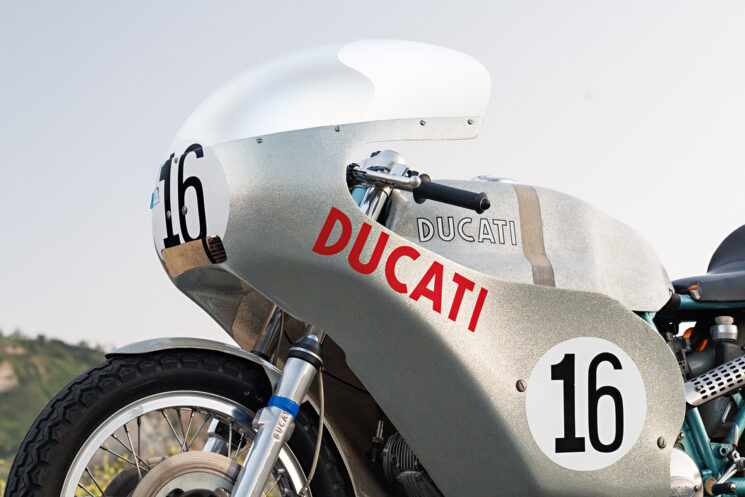
Among the drivers selected for Imola were Paul Smart and Bruno Spaggiari, with Smart coming directly from an event in Altlanta to race a bike he’d never seen before. After taking an early lead in the race, Giacomo Agostini’s MV Agusta retired early, and Smart and Spaggiari battled spiritedly through the circuit’s final laps. Smart ultimately took the checkered, and the Ducati brass was so thrilled with his win that they told him the Ducati was his to keep.
Record-keeping was sparse in the heat of the moment, but experts believe that chassis No. 751033 was spared from the rigors of Imola in 1972, and stayed back at the Ducati factory as a spare. And that likely contributes to the astounding original condition of the bike, on which marque expert Ian Falloon commented “Condition and originality is of such a high standard that this is one of the finest known examples.”

The Ducati was subsequently shipped to South Africa in 1973 to compete in the Formula 750 championship, where Errol James piloted the bike to a fifth-place finish in the South African TT. Other documented competition history includes appearances at the Kyalami Circuit and Angola. After long-term storage, the bike was recommissioned for vintage racing in 1999, with a sympathetic mechanical overhaul to ensure longevity.
Crossing the block as Lot 40, this Ducati 750 Imola Desmo is a rare opportunity to own a piece of premier Ducati history. As such, Gooding estimates the bike will bring the big bucks, between $650,000 and $750,000.
Images courtesy of Gooding & Company.
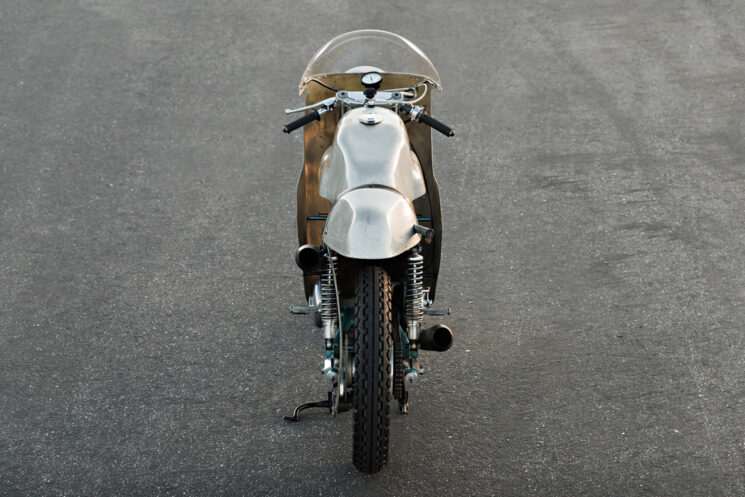
from Bike EXIF https://ift.tt/gMAfGhb
No comments:
Post a Comment